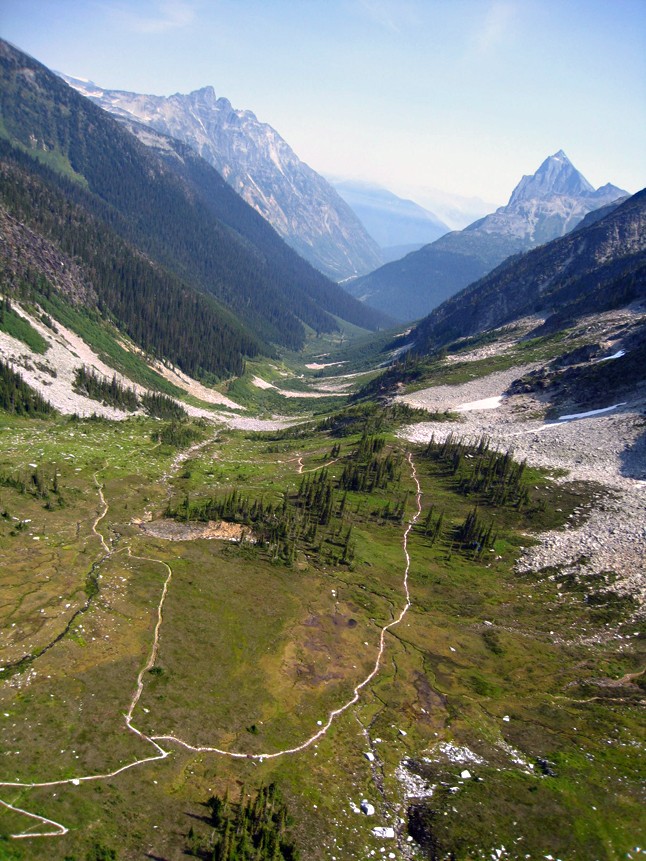

Not long after starting up through the lower forests of Balu Trail in Glacier National Park, hikers emerge into an alpine world. Connaught creek flows through the valley bottom and the avalanche paths passes reveal the lush foliage of glacier lilies, sitka valerian, slide alder and huckleberry. If the vegetation doesn’t give it away, the names of the mountains flanking the valley, such as Grizzly Mountain, Ursus Major, Ursus Minor and even Balu itself (which conjures images of Disney’s charismatic dancing bear and stems from the Indian word “baloo” meaning bear) do.
This is bear country.
There is a long history of bear-human interaction along the Balu Trail; not surprising as it provides grizzly bears with high quality habitat and a travel corridor. In 2006, Parks Canada contracted an independent wildlife biologist to conduct an evaluation and analysis of Grizzly Bear habitat in Glacier National Park, to assist in managing trails and facilities by identifying areas of risk for bear-human conflict. Over the 2007 and 2008 summers park staff took the recommendations of the study and reconfigured the Balu Trail. Reconfigure doesn’t do it justice; the Balu Trail was re-created by Glacier’s very talented Trail Crew.
In June 2007, the trail work began. Sections where vegetation limited visibility and reduced the ability of bears and humans to detect each other were identified. The trail crew improved sightlines by thinning the vegetation beside the trail making it possible to see farther down the trail. Good sightlines allow bears and people to be aware of one another sooner and to take actions to avoid an encounter.
Phase 2 of the project involved re-routing a section of the trail to avoid a basin where grizzly bears commonly forage in the summer. The new section of trail detours onto a bench using the topography to provide spatial separation between bears and people.
The trail crew faced some challenges in building this trail. The new trail would pass through delicate meadows that are often quite wet. In order to prevent damage to these alpine meadows, to keep hikers feet dry and to prevent trail braiding, the trail crew used extensive rock work. Local flagstones from adjacent slopes were moved onto site creating a very aesthetic hiking experience.
Another challenge was that August was very wet—making working conditions miserable. However the trail crews’ perseverance paid off in unexpected ways. Plugs of vegetation that were removed in the construction of the new trail were moved onto the old trail bed to facilitate revegetation. The wet weather kept these plugs moist and the rehabilitation of the old section of trail was very successful, blending it into the landscape after only one season.
The end result is a trail that has been referred to as “stairway to heaven”, thanks to the hard work of a very talented crew. Duane Flick, the trail crew lead hand states that their success the result of an “awesome crew that takes pride in their work. Not only striving to make a high quality trail through beautiful country, but make the trail itself beautiful.”
This summer, the trail crew is working on a similar project on the Sir Donald Trail, which will relocate the existing trail out of avalanche paths and follow up the other side of the creek. This new trail provides amazing views and will hopefully reduce the displacement of bears and prevent negative bear-human encounters.
Alice Weber is a Revelstok-based communications officer with Parks Canada



